The Subiculum: A Potential Site of Ictogenesis in a Neonatal Seizure Model
- PMID: 28473802
- PMCID: PMC5397469
- DOI: 10.3389/fneur.2017.00147
The Subiculum: A Potential Site of Ictogenesis in a Neonatal Seizure Model
Abstract
Studies have reported that the subiculum is one origin of interictal-like discharges in adult patients with temporal lobe epilepsy; however, whether the subiculum represents a site of ictogenesis for neonatal seizures remains unclear. In this study, multi-electrode recording techniques were used to record epileptiform discharges induced by low-Mg2+ or high-K+ artificial cerebrospinal fluid in neonatal mouse hippocampal slices, and the spatiotemporal dynamics of the epileptiform discharges were analyzed. The Na+-K+-2Cl- cotransporter 1 (NKCC1) blocker, bumetanide, was applied to test its effect upon epileptiform discharges in low-Mg2+ model. The effect of N-methyl-d-aspartate receptors (NMDARs) antagonist, d-AP5, upon the epileptiform discharges in high-K+ model was examined. We found that the neonatal subiculum not only relayed epileptiform discharges emanating from the hippocampus proper (HP) but also initiated epileptiform discharges (interictal- and ictal-like discharges) independently. The latency to onset of the first epileptiform discharge initiated in the subiculum was similar to that initiated in the HP. Bumetanide efficiently blocked seizures in the neonatal HP, but was less effectively in suppressing seizures initiated in the subiculum. In high-K+ model, d-AP5 was more effective in blocking seizures initiated in the subiculum than that initiated in the HP. Furthermore, Western blotting analysis showed that NKCC1 expression was lower in the subiculum than that in the HP, whereas the expression of NMDAR subunits, NR2A and NR2B, was higher in the subiculum than that in the HP. Our results revealed that the subiculum was a potential site of ictogenesis in neonatal seizures and possessed similar seizure susceptibility to the HP. GABAergic excitation resulting from NKCC1 may play a less dominant role during ictogenesis in the subiculum than that in the HP. The subicular ictogenesis may be related to the glutamatergic excitation mediated by NMDARs.
Keywords: N-methyl-d-aspartate receptors; Na+–K+–2Cl− cotransporter 1; hippocampus proper; neonatal seizures; subiculum.
Figures
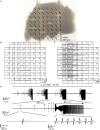

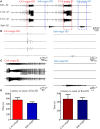


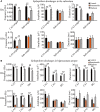

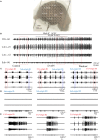


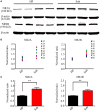
Similar articles
-
Subiculum-entorhinal cortex interactions during in vitro ictogenesis.Seizure. 2015 Sep;31:33-40. doi: 10.1016/j.seizure.2015.07.002. Epub 2015 Jul 10. Seizure. 2015. PMID: 26362375 Free PMC article.
-
Ictal epileptiform activity in the CA3 region of hippocampal slices produced by pilocarpine.J Neurophysiol. 1998 Jun;79(6):3019-29. doi: 10.1152/jn.1998.79.6.3019. J Neurophysiol. 1998. PMID: 9636105
-
Rat subicular networks gate hippocampal output activity in an in vitro model of limbic seizures.J Physiol. 2005 Aug 1;566(Pt 3):885-900. doi: 10.1113/jphysiol.2005.088708. Epub 2005 Jun 2. J Physiol. 2005. PMID: 15932889 Free PMC article.
-
Transition to Seizure from Cellular, Network, and Dynamical Perspectives.In: Noebels JL, Avoli M, Rogawski MA, Vezzani A, Delgado-Escueta AV, editors. Jasper's Basic Mechanisms of the Epilepsies. 5th edition. New York: Oxford University Press; 2024. Chapter 9. In: Noebels JL, Avoli M, Rogawski MA, Vezzani A, Delgado-Escueta AV, editors. Jasper's Basic Mechanisms of the Epilepsies. 5th edition. New York: Oxford University Press; 2024. Chapter 9. PMID: 39637223 Free Books & Documents. Review.
-
Interictal-ictal interactions and limbic seizure generation.Rev Neurol (Paris). 1999 Jul;155(6-7):468-71. Rev Neurol (Paris). 1999. PMID: 10472661 Review.
Cited by
-
Neurodevelopmental deficits and cell-type-specific transcriptomic perturbations in a mouse model of HNRNPU haploinsufficiency.PLoS Genet. 2023 Oct 2;19(10):e1010952. doi: 10.1371/journal.pgen.1010952. eCollection 2023 Oct. PLoS Genet. 2023. PMID: 37782669 Free PMC article.
-
Inhibition of NMDA Receptors Downregulates Astrocytic AQP4 to Suppress Seizures.Cell Mol Neurobiol. 2020 Nov;40(8):1283-1295. doi: 10.1007/s10571-020-00813-6. Epub 2020 Feb 27. Cell Mol Neurobiol. 2020. PMID: 32107753 Free PMC article.
References
LinkOut - more resources
Full Text Sources
Other Literature Sources
Research Materials
Miscellaneous

